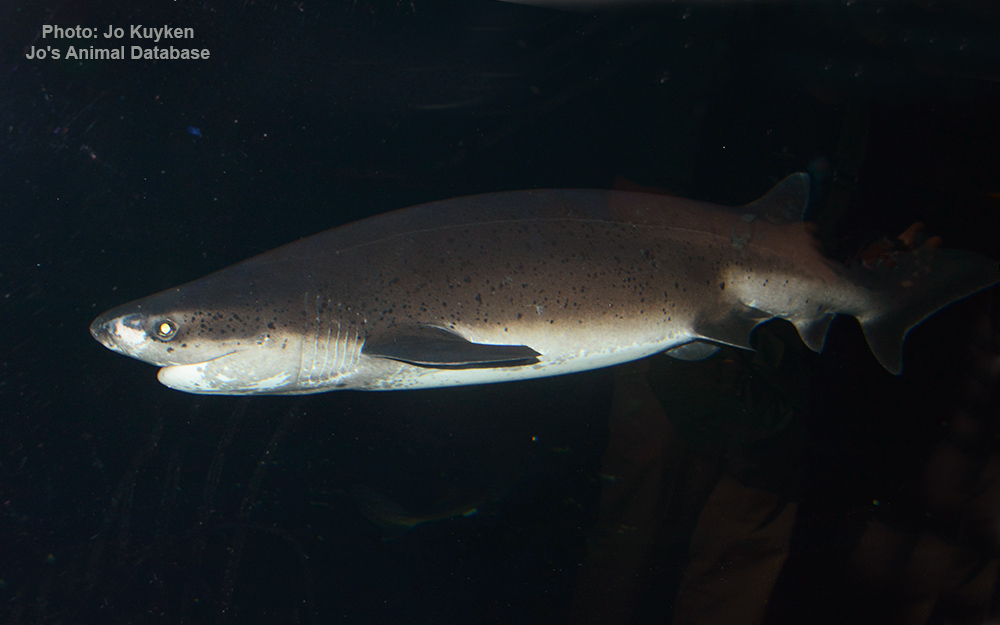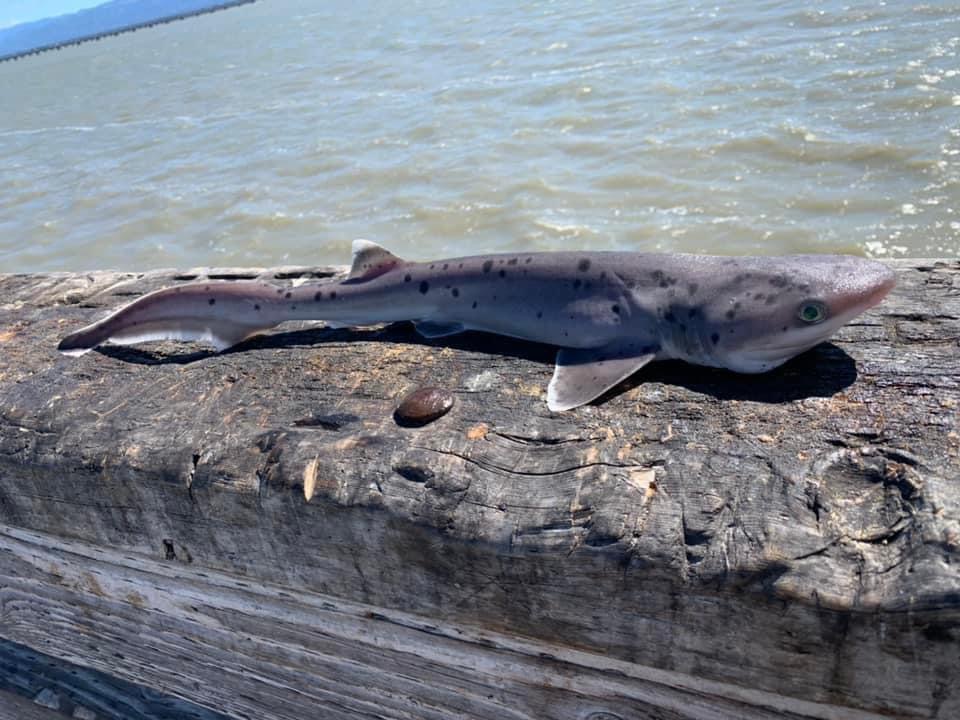Broadnose sevengill shark
(Notorynchus cepedianus)

Image source: Jo's Animal Database
Classification
General data
The broadnose sevengill shark (Notorynchus cepedianus) is the only extant member of the genus Notorynchus, in the family Hexanchidae. It is recognizable because of its seven gill slits, while most shark species have five gill slits, with the exception of the members of the order Hexanchiformes and the sixgill sawshark.
This shark has a large, thick body, with a broad head and blunt snout. The top jaw has jagged, cusped teeth and the bottom jaw has comb-shaped teeth. Its single dorsal fin is set far back along the spine towards the caudal fin, and is behind the pelvic fins. In this shark the upper caudal fin is much longer than the lower, and is slightly notched near the tip.
Like many sharks, this sevengill is counter-shaded. Its dorsal surface is silver-gray to brown in order to blend with the dark water and substrate when viewed from above. In counter to this, its ventral surface is very pale, blending with the sunlit water when viewed from below. The body and fins are covered in a scattering of small black & white spots. In juveniles, their fins often have white margins.
The length at birth is 40–45 cm (15.5–17.5 in) while the mature male length is 1.5 m (4.9 ft) and mature female length is around 2.2 m (7.2 ft). The maximum length found is 3.3 metres (11 ft). The maximum recorded weight is 182 kg (401 lb) for a 2.91-metre (9.5 ft) individual. The shark is large and active and has a large head but small eyes and snout. The mouth is broad and prominent. The shark has one dorsal fin at the back of the body that spans from the insertion to the tops of the pelvic fins. The mottled grey and white body is covered in a variable number of small black spots.
The broadnose sevengill has so far been found in the western Pacific Ocean off China, Japan, Australia, New Zealand, the eastern Pacific Ocean off Canada, United States and Chile, and the southern Atlantic Ocean off Argentina and South Africa.
It is significantly found in the San Francisco Bay particularly near the Golden Gate Bridge and Alcatraz Island. Large, old individuals tend to live in deep offshore environments as far down as 446 feet (136 m). However, most individuals live in either the deep channels of bays, or in the shallower waters of continental shelves and estuaries. These sharks are mainly benthic in nature, cruising along the sea floor and making an occasional foray to the surface. Individuals that live closer to the coast in South Africa tend to prefer more open areas with a sandy sea floor and sparse clumps of kelp.











